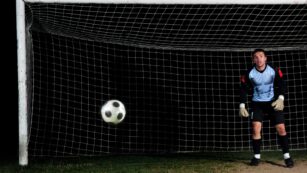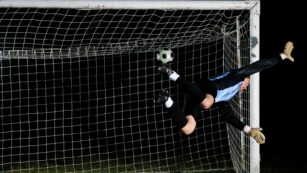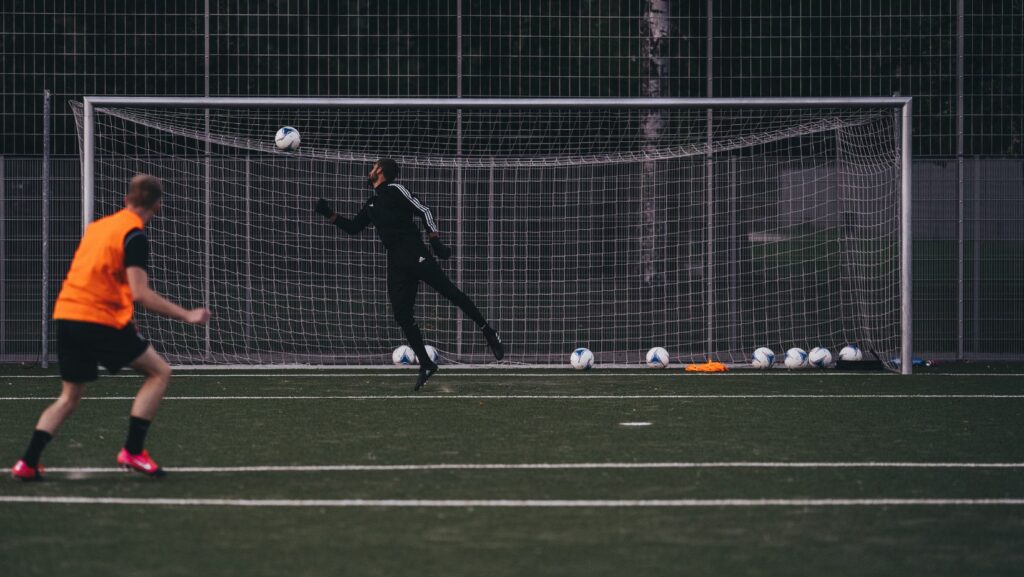Diving is a crucial skill for any goalkeeper aiming to make game-changing saves. Mastering the art of diving not only enhances a player’s performance but also boosts their confidence on the field. With the right techniques and practice, goalkeepers can turn potential goals into spectacular stops.
Goalkeeping Tips on Diving
Diving is a crucial skill for goalkeepers to master. Adhering to these tips enhances diving technique and minimizes injury risk.
Importance of Diving in Goalkeeping
 Diving serves as a critical skill for goalkeepers, enhancing both performance and confidence. Mastering diving techniques enables goalkeepers to effectively protect the goal while executing saves that can change the outcome of a game.
Diving serves as a critical skill for goalkeepers, enhancing both performance and confidence. Mastering diving techniques enables goalkeepers to effectively protect the goal while executing saves that can change the outcome of a game.
Diving improves a goalkeeper’s ability to reach balls that are aimed toward the corners of the net. Proper body positioning ensures optimal reach and allows goalkeepers to cover more ground. Aligning the body correctly, lowering the center of gravity, and opening the torso are key factors in achieving effective saves.
Timing plays a crucial role in diving. Anticipating the shot and starting the dive early provide an advantage. This anticipatory action allows goalkeepers to adjust their movements as the play develops, increasing the chances of a successful save.
Technique is vital in executing a safe and effective dive. Using the correct stride sets the foundation for a solid dive. Keeping arms extended upon landing fosters a better impact and mitigates the risk of injury. Focusing on a safe landing technique protects the body while maintaining optimal performance.
Practice drills significantly boost a goalkeeper’s diving skills. Partner drills enhance reaction time, while ladder drills improve agility and simulate real-game scenarios. Incorporating these drills into training routines helps build confidence in diving abilities.
Using proper gear also plays a vital role in successful diving. Goalkeepers need to ensure they wear appropriately fitted equipment to protect themselves during dives. Practicing on soft surfaces can further diminish the risk of injury and build comfort during training.
Building strength supports diving actions, allowing for a more powerful and controlled performance. Incorporating strength training into a goalkeeper’s regimen can lead to improved agility and endurance, contributing to long-term skill development.
Techniques for Effective Diving
Proper Body Positioning
 Proper body positioning establishes a strong foundation for successful dives. Goalkeepers should maintain an aligned body, ensuring their head, shoulders, and hips point toward the intended direction of the dive. Keeping the knees slightly bent lowers the center of gravity, which enhances stability. Goalkeepers benefit from opening the torso to increase reach, enabling them to cover more ground when lunging for the ball. Positioning the non-dominant arm above the head and extending the dominant arm toward the ball increases the likelihood of making critical saves.
Proper body positioning establishes a strong foundation for successful dives. Goalkeepers should maintain an aligned body, ensuring their head, shoulders, and hips point toward the intended direction of the dive. Keeping the knees slightly bent lowers the center of gravity, which enhances stability. Goalkeepers benefit from opening the torso to increase reach, enabling them to cover more ground when lunging for the ball. Positioning the non-dominant arm above the head and extending the dominant arm toward the ball increases the likelihood of making critical saves.
Timing Your Dive
Timing plays a vital role in effective diving. Goalkeepers should practice anticipating the shot by reading the attacker’s body language and positioning. Starting the dive early provides an advantage, allowing the goalkeeper to get a head start toward the ball. The key is to react without hesitation, transitioning from standing to diving fluidly. Practicing on-field drills for timing can enhance reflexes, enabling quicker and more accurate dives during competitive play.
Common Mistakes to Avoid
Overcommitting to the Dive
 Overcommitting to dives often leads to missed saves and poor positioning. Goalkeepers need to assess the shot accurately before committing. Staying balanced and maintaining an appropriate distance from the shooter allows for better reaction times.
Overcommitting to dives often leads to missed saves and poor positioning. Goalkeepers need to assess the shot accurately before committing. Staying balanced and maintaining an appropriate distance from the shooter allows for better reaction times.
To avoid this mistake, goalkeepers should:
-
Gauge the shooter’s approach to determine if a dive is necessary.
-
Maintain a low center of gravity before the dive to facilitate quick adjustments.
-
Focus on keeping one foot grounded until the last moment, allowing for a more controlled dive.
Ignoring the Ball’s Trajectory
Ignoring the ball’s trajectory can result in ineffective dives and unnecessary rebounds. Understanding how to read the ball’s flight path allows goalkeepers to position themselves more effectively. Anticipating changes in trajectory can enhance the ability to react promptly during critical moments.
-
Watch the attacker’s body language and foot placement closely for clues about the shot direction.
-
Practice tracking the ball during drills to improve visualization and spatial awareness.
-
Work on adjusting body and arm positioning based on the observed trajectory to facilitate a successful catch or stop.

